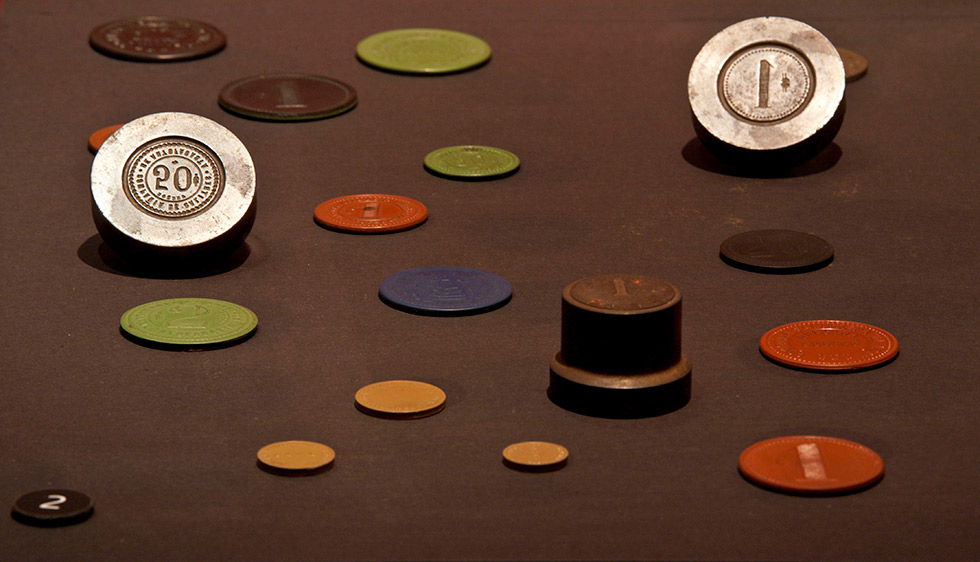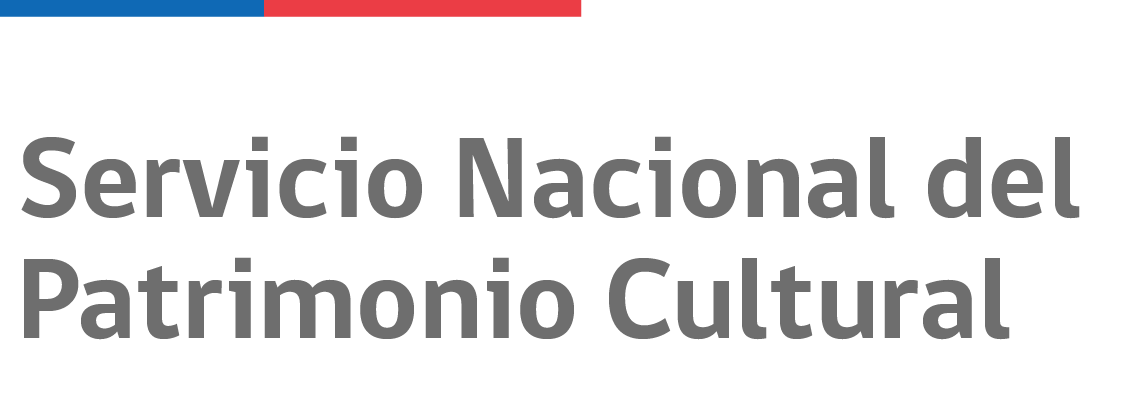
Services:
- Audio guide
- Disabled access
- Guided visits
- Public transport
Opening times:
Admission:
About the institution
The Antofagasta Regional Museum, located in the port's historic center, was founded by the former University of the North. Its permanent exhibition, comprising 12 rooms, provides an overview of the geology that has given the region its unique mineral resources and traces its history from its indigenous inhabitants through to the saltpeter industry of late nineteenth and early twentieth centuries and on to the present day.
The buildings

Tokens and a stamp used by northern Chile's saltpeter companies.
The Museum is housed in two heritage properties:
- Former Customs House. Now the home of the Museum's permanent collection, the old Customs House was designed by the Valparaíso-based company, Wetmare and Cía., in 1867 and its modular wooden structure was shipped to the port of Mejillones, near Antofagasta, where it was used until 1888 by the Regional Government. It was then disassembled and taken to Antofagasta where the old customs house had been destroyed by a fire. Its style is typical of the architecture seen at the time along the coast of northern Chile, particularly in the port of Iquique, and reflects the influence of British immigration.
- Former Port Authority Building. Dating back to 1920, this building now houses the Museum's administrative offices and laboratory and a specialized library.
Inside the Museum
The Museum's collection comprises around 9,000 catalogued items, including mineralogical, paleontological, archaeological, bio-anthropological, historical and ethnographical objects. Those relating to the first human settlements on the coast are of particular interest while its historical collections provide an insight into the different social, political, economic and cultural stages of the region's development, including that of the port of Antofagasta itself. The specialized library contains approximately 2,000 books, scientific journals and publications on topics related to archaeology, anthropology, ethnohistory and regional history.
Don't miss
Displayed on the ground floor of the Museum is the only existing photograph of a woman from the Chango indigenous people, which inhabited the coast of northern Chile.


